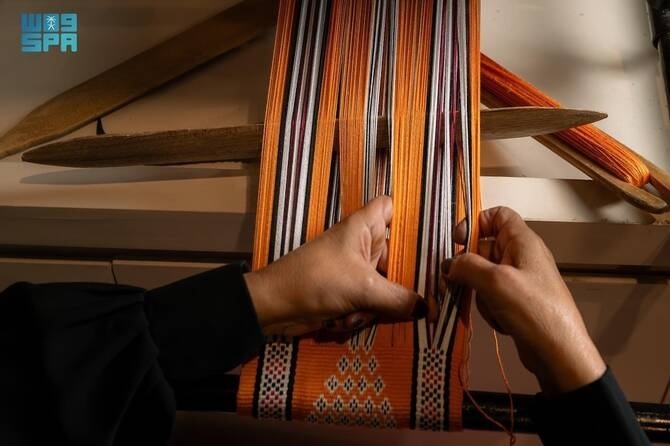Saudi Craftswomen Shine at Banan Festival as Heritage and Creativity Take Center Stage
Riyadh – The Banan festival has become one of the most vibrant celebrations of Saudi Arabia’s artistic heritage, bringing together talented craftswomen, global artisans and culture enthusiasts in a colorful showcase that highlights the Kingdom’s deep-rooted traditions and modern creativity in the Year of Handicrafts.
Running in Riyadh until Nov. 26, the event stands as a powerful platform that honors the role of Saudi women in preserving cultural identity while introducing innovative ideas that reflect the nation’s growing artistic confidence.
Visitors to the festival are welcomed into a warm atmosphere filled with storytelling, craftsmanship and cultural diversity, where more than 20 countries participate and share their unique crafts and traditions.
The gathering emphasizes empowerment, unity and inspiration, showing how artisans from different regions and backgrounds contribute to the shared language of creativity.
Saudi visitors like Rahaf Al-Harthi praise the festival for showcasing the exceptional abilities of Saudi women, many of whom continue to redefine traditional crafts through fresh interpretations and modern flair.
Al-Harthi expressed pride in seeing local talent celebrated on such a global stage, noting that the festival reflects the strength, dedication and artistic excellence of Saudi women throughout history.
One of the most admired crafts featured is Sadu weaving, a traditional Bedouin art that transforms wool into striking geometric patterns bursting with color and meaning.
The festival displays Sadu-inspired abayas, contemporary clothing, home décor and handcrafted accessories that honor the past while embracing modern design trends.
Rahaf and her sister Ohood, whose mother is a participating Sadu weaver, said their visit to Banan helped them appreciate the beauty, diversity and cultural significance of regional crafts.
They explained how women in earlier generations used limited resources to create clothing, tents and decorative items, proving their ingenuity and resilience—qualities still reflected in today’s artisans.
Ohood said that Banan reveals the rich variety of crafts found across Saudi Arabia, from Hail to Jouf and Madinah, each region bringing its own colors, symbols and techniques to the festival.
She encouraged visitors to explore the event, describing it as a meaningful experience that deepens understanding of national heritage while celebrating innovation.
Among the standout participants is Saudi artist Duha Akhdar from Al-Qatif, known for her intricate macrame and knot artistry inspired by old fishnets and maritime heritage.
Her work transforms simple rope into elegant hanging baskets, ornaments and decorative pieces, blending tradition with creativity in ways that resonate with visitors.
Akhdar uses tree branches—once integral elements of old homes—as bases for her macrame boats, carved with Arabic calligraphy and topped with beautifully knotted sails.
She has trained more than 600 individuals in macrame, including people with disabilities, making her art not only visually captivating but also socially uplifting.
Her interest in macrame began during her studies in Canada, where she observed how Mexican families preserved their knot-tying traditions across generations.
This inspired her to research Arab history, where she discovered similar techniques that date back centuries, encouraging her to revive and modernize the craft within Saudi Arabia.
Akhdar’s newer pieces include works inspired by the Kaaba, which she has presented to prominent Saudi leaders, reflecting her pride in cultural heritage and her desire to honor spiritual themes.
Her journey demonstrates how traditional crafts can evolve into meaningful art forms that strengthen cultural identity and inspire the next generation of makers.
The festival also welcomes global creators such as Georgia’s Nata Nikoleishvili, who, alongside her mother, produces handmade clothing using wool felting, natural dyes and plant-based prints.
Their participation highlights Banan’s international appeal and its mission to connect cultures through creativity, craftsmanship and shared artistic passion.
Saudi artist Afaf Dajam adds depth to the festival through her modern interpretations of Al-Qatt Al-Asiri, a regional art recognized by UNESCO for its cultural importance.
Her work explores the beauty of geometric wall designs traditionally created by women, blending history with contemporary artistic expression.
Dajam says Banan provides an inspiring environment where artists exchange ideas and learn from one another, discovering surprising similarities between Saudi crafts and those from India, Mexico and North Africa.
This exchange strengthens cultural appreciation and reinforces the universal language of creativity that binds artisans together across borders.



